Media wall ideas – how to house your tech in the most stylish and successful way
Consider these media wall ideas when storing your TV, sound system and gadgets for an eye-catching and convenient setup
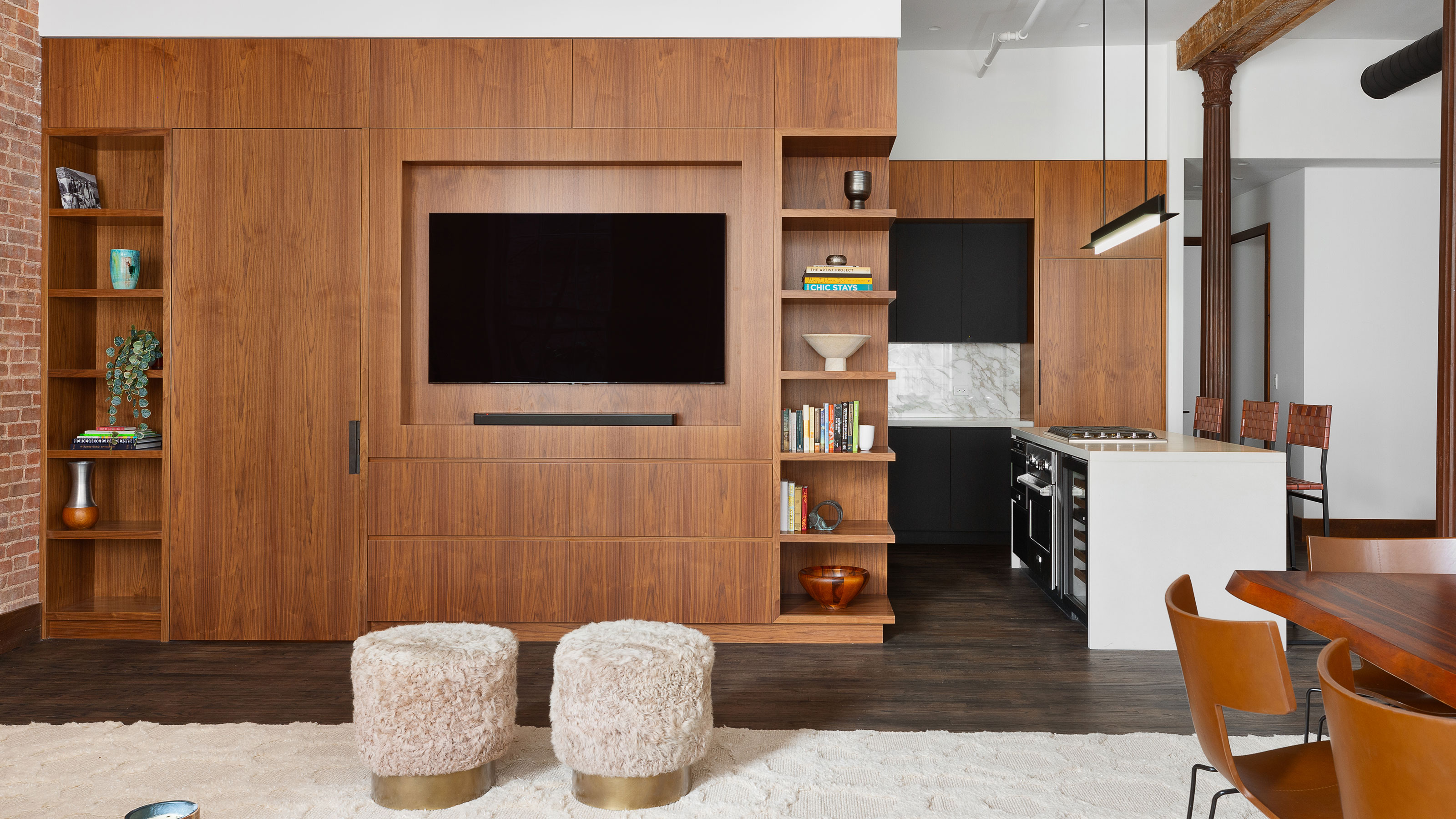
Media wall ideas can transform the look and feel of your room, be it with a freestanding unit or built-in wall-to-wall solution. The aim of a media wall is to house your audio and visual electronics in the most stylish way. It also needs to be comfortable to view and access, with unsightly cables and components hidden neatly out of sight.
A media wall provides the perfect base for all your smart home technology. This can include your TV, DVD player, soundbar and music system stored neatly in one place. You may also want to include storage for all your CDs, DVDs, vinyls, books and treasured objet d’art – either tucked away behind cabinet doors or on display.
Media walls can work well in the living room or open-plan kitchen. They are equally effective in a cosy snug or dedicated home cinema room, using the best TV brands for a movie theatre experience.
When it comes to style, you can choose from a range of bespoke or off-the-peg solutions. So to avoid getting your cushion tassels in a twist trying to consider all the technicalities, we've shared top tips from the experts on how to plan your media wall here.
7 stylish media wall ideas to house your tech
1. Consider what to include in your media wall
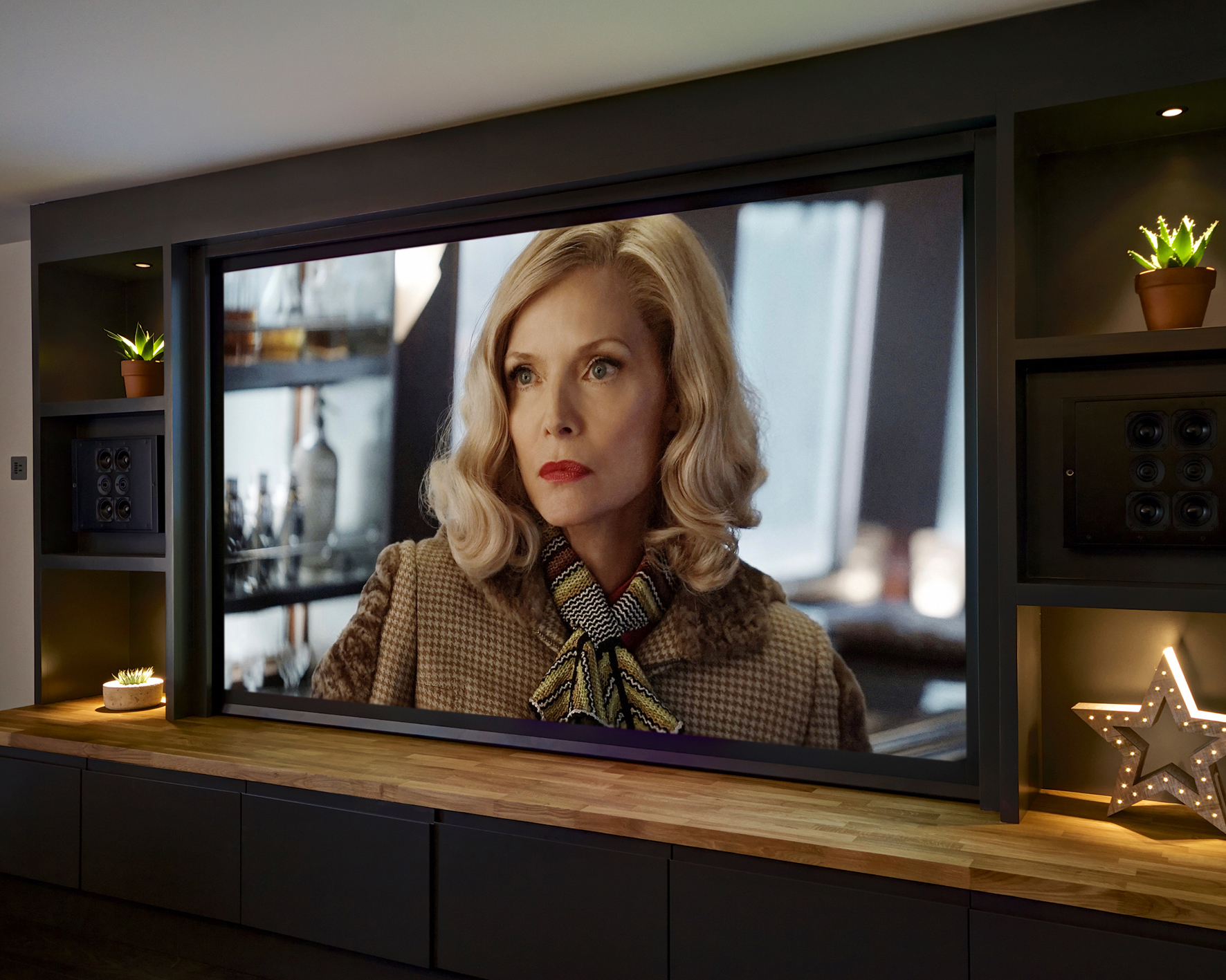
This media wall was created by Cinemaworks and Zachrisson-Smith, with the cabinet design by Owen Maddock and built by Jon at M&J Carpenters of Portishead.
In the first instance, list all the things you’ll want to include in your media wall such as a TV, Sky Q box, subwoofer amps, consoles for PS5 and Xbox and so on. You’ll need to measure in advance to make sure they will all fit with you TV mounting idea. ‘If you're happy with a soundbar that typically beefs up the sound of your TV then there will be less to put in the cabinetry,’ says Owen Maddock of Cinemaworks. ‘But if you want to be seriously immersed you’ll need the classic AV-receiver and speakers arrangement, so make sure they’ll fit.
‘You may want to include a Blu-Ray player too. While they aren’t as popular as they were, they still give you the best possible sound and picture playback. You might also have one or more gaming consoles.’
2. Decide on a position for your media wall
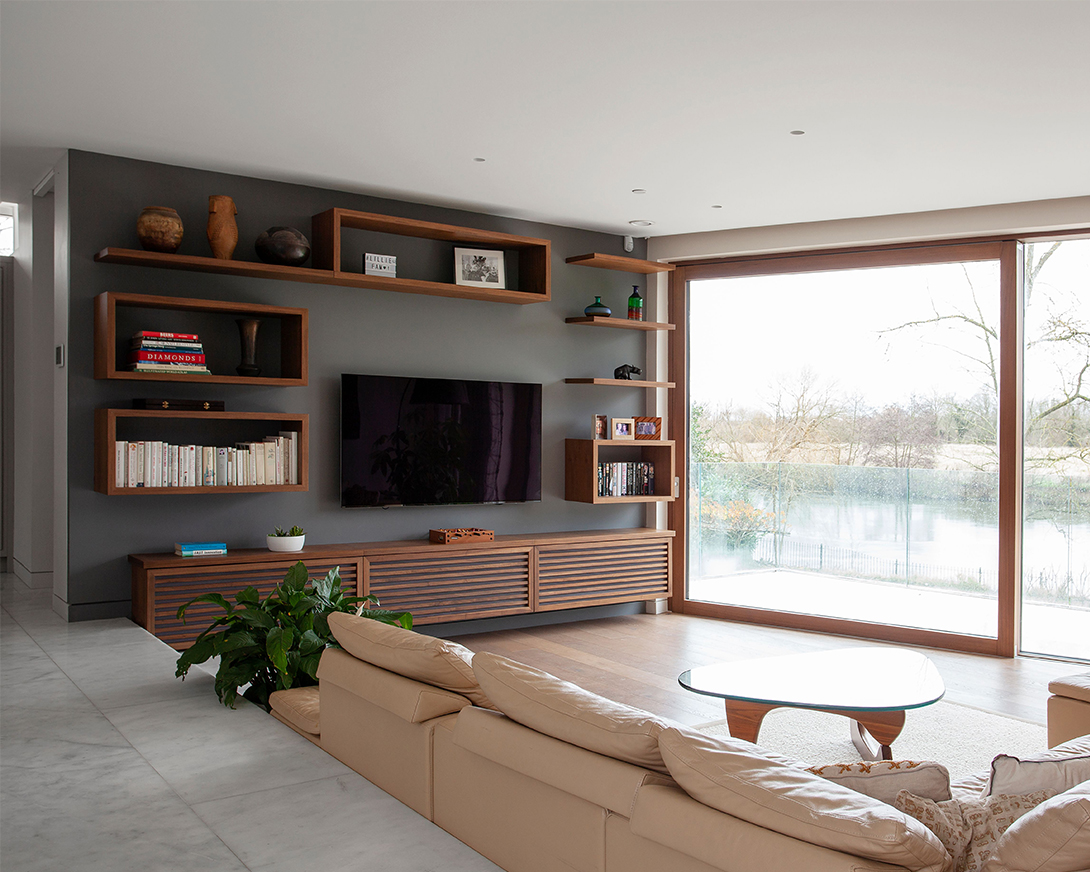
As it can be costly to install, you’ll want your media wall to be the star of the room, without looking too imposing. You can choose to place it in a dedicated home cinema or media room, or adapt it to suit your living room or open-plan kitchen. Wherever you choose to place it, you will have to think carefully about line of sight from where you will be sitting. You will need to view your TV and access the rest of your media easily.
‘Don’t forget to think about noise too,' says Alex Josling from Seven Integration. 'Some items will have fans that run to keep them cool, so consider whether they will be subtle enough or will they disturb you? You can consider positioning a rack with essential equipment in another room if needs be.’
3. Pick between a freestanding cabinet or custom-made wall-to-wall design
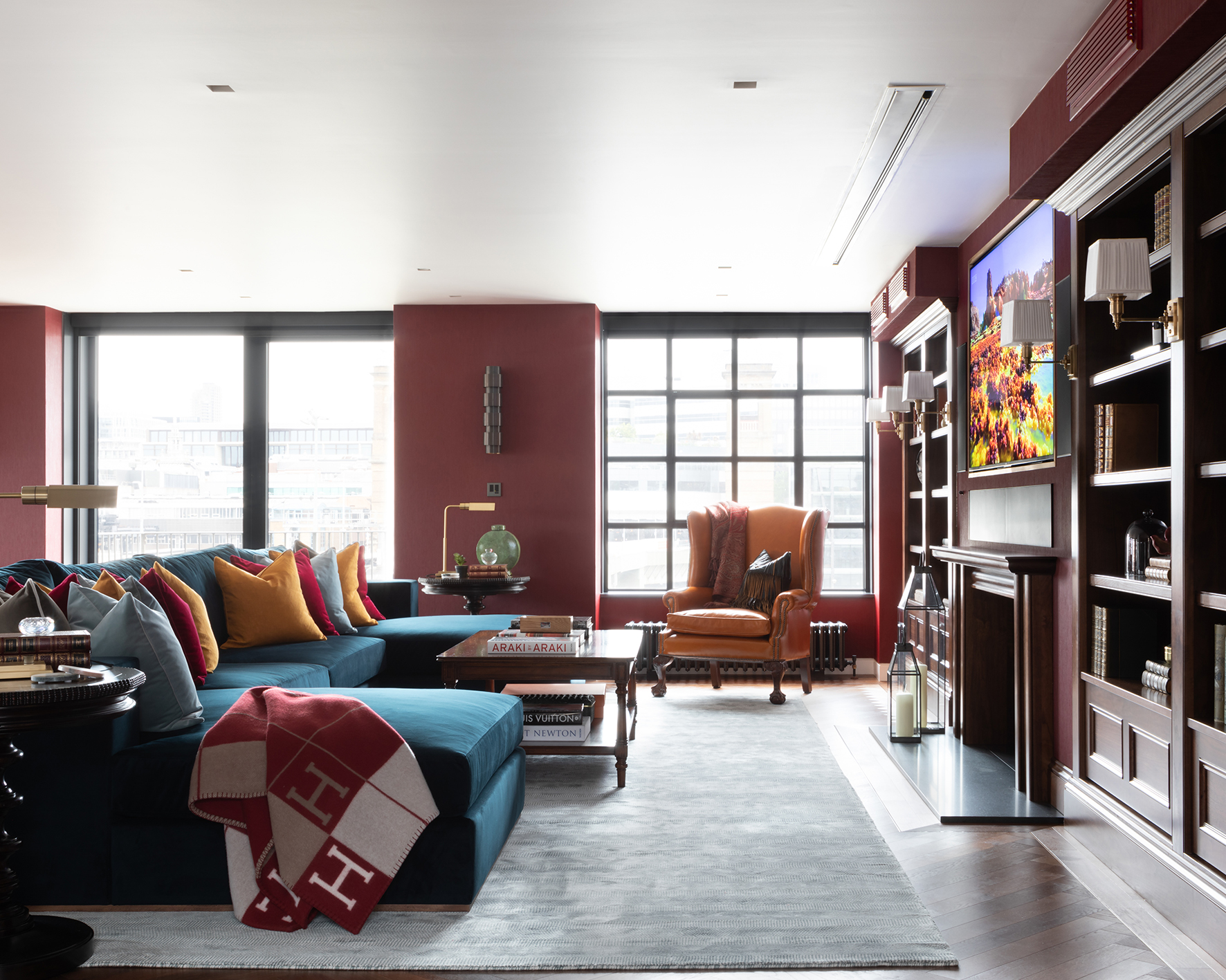
This award-winning media room was designed by London integration firm and CEDIA Member Cornflake.
You can buy attractive off-the-shelf units in many of the major furniture stores to act as the base for your media wall, but you’ll need to check dimensions carefully to ensure your gadgets fit. Alternatively, you can use a bespoke furniture maker who will work closely with your audio and visual expert to create the perfect living room TV idea. To find someone in your area who can advise on installation, visit the CEDIA website (the global association for the home technology industry).
'Don’t expect a joinery specialist - whether it’s a craftsman or a larger firm - to also be an audio-visual expert,' says Owen Maddock. 'If you need one of those, contact a CEDIA-approved install firm to help. Our best projects have worked well when I as the AV specialist and designer, plus the lighting designer and the cabinet maker worked together as a team so we could hone in on all the details.
'The problem with off-the-shelf units, which are likely to be cheaper, is you have to be diligent. Is the screen height right for your room? What about the TV size? Some furniture companies seem to forget all about ergonomics and comfort metrics when it comes to TV furniture – we don’t know why.'
4. Think about material and style
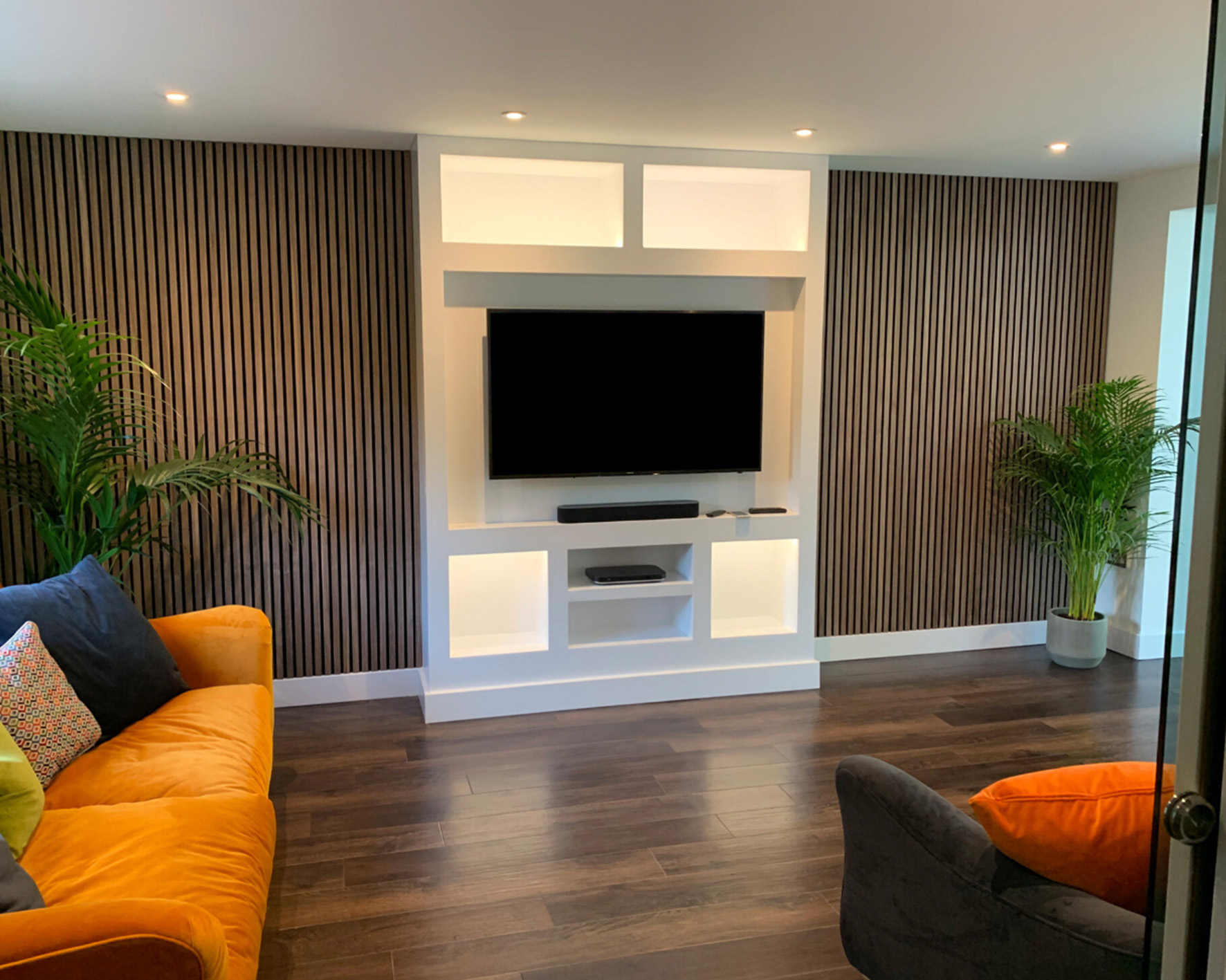
While there are plenty of colors and finishes to choose from that can match your furniture and accessories, opting for a neutral-colored media wall will ensure longevity. A wooden finish can be timeless and works well in both modern and classic settings, for example.
‘Fabric-based media walls are great and bang on-trend just now,' notes Owen Maddock. 'As well as giving a soft, luxury feel they let you conceal speakers, acoustic treatments and some electronics. But you may also need a wooden cabinet for equipment such as Skybox, disc player, surround amplifier and gaming equipment- whether that’s underneath or off to the side.
‘I’ve seen Cinema Build Systems offer some amazing fabric-based media wall designs, with a vast network of installation partners. Acupanel acoustic wall paneling is popular too, giving improved sound performance and a Scandi feel.'
Owen points out that it's important to use matte finishes throughout, and ideally darker colors to improve the contrast performance. 'Shiny is distracting so keep it out of the viewing area. Put metal picture frames or your artworks to the side or behind you instead.’
5. Check the dimensions
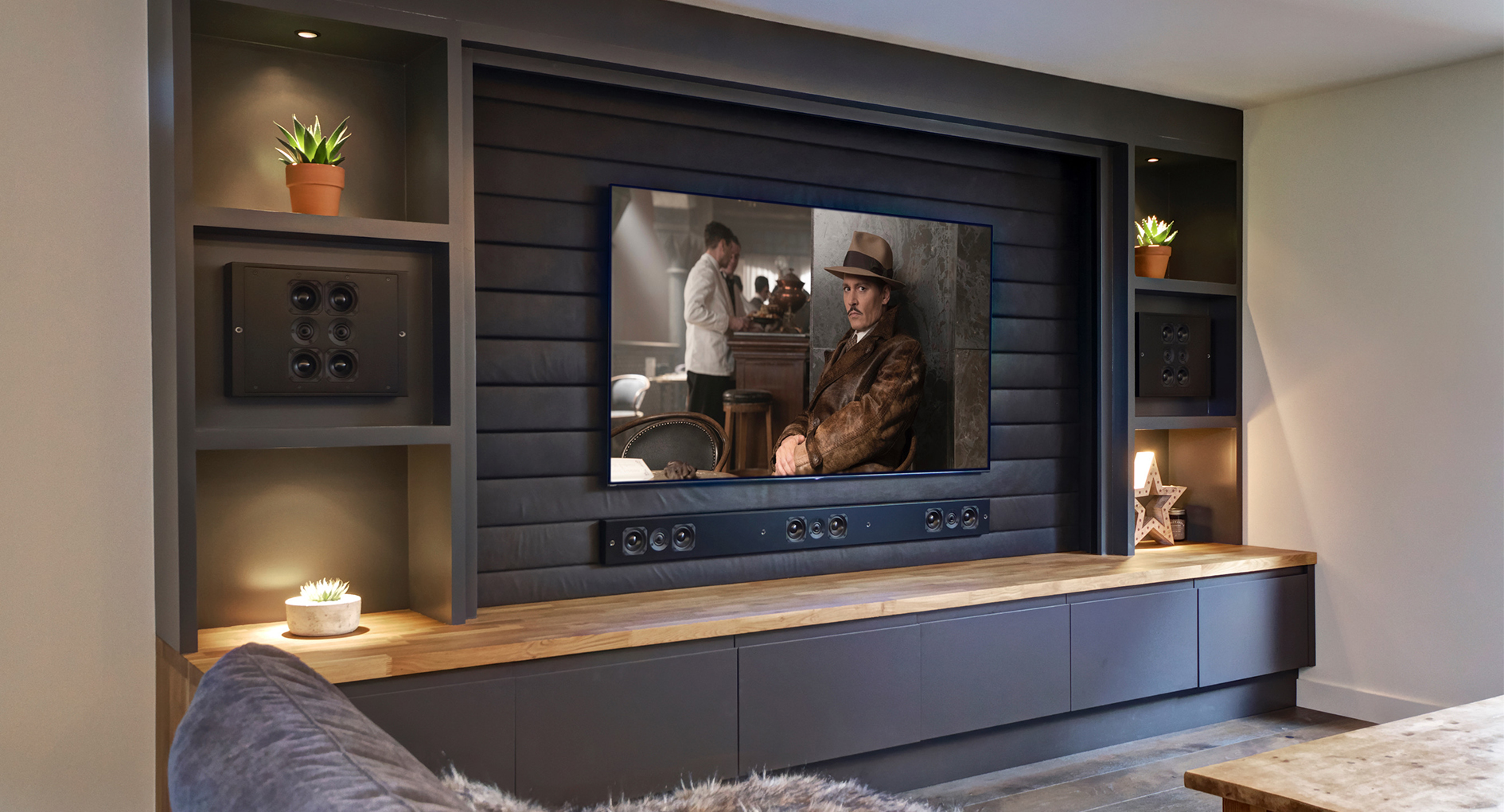
Making sure every gadget has its ideal space is key – especially if you are going for an off-the-peg idea to hide a TV or audio equipment. Alex Josling suggests you start by drawing a scale picture.
‘Use something like Sketchup to layout out where everything will go,' he says. 'Check dimensions for the products you are going to hide away and make sure they will fit the internal dimensions of the space you want it to go in. Allow space for at least your fingers to get down each side. And consider how you are going to plug in all those cables to the back of your AV receiver?’
‘Speakers can be built into the cabinet and hidden behind acoustically transparent material to hide them. The space behind the speaker will need acoustic treatment to allow the speaker to work correctly. You can get quite over-whelmed with the technical aspect of this. You want to make sure nothing is going to rattle when you have the speakers turned up either. Talk to a professional who will be able to help.’
6. Allow for ventilation
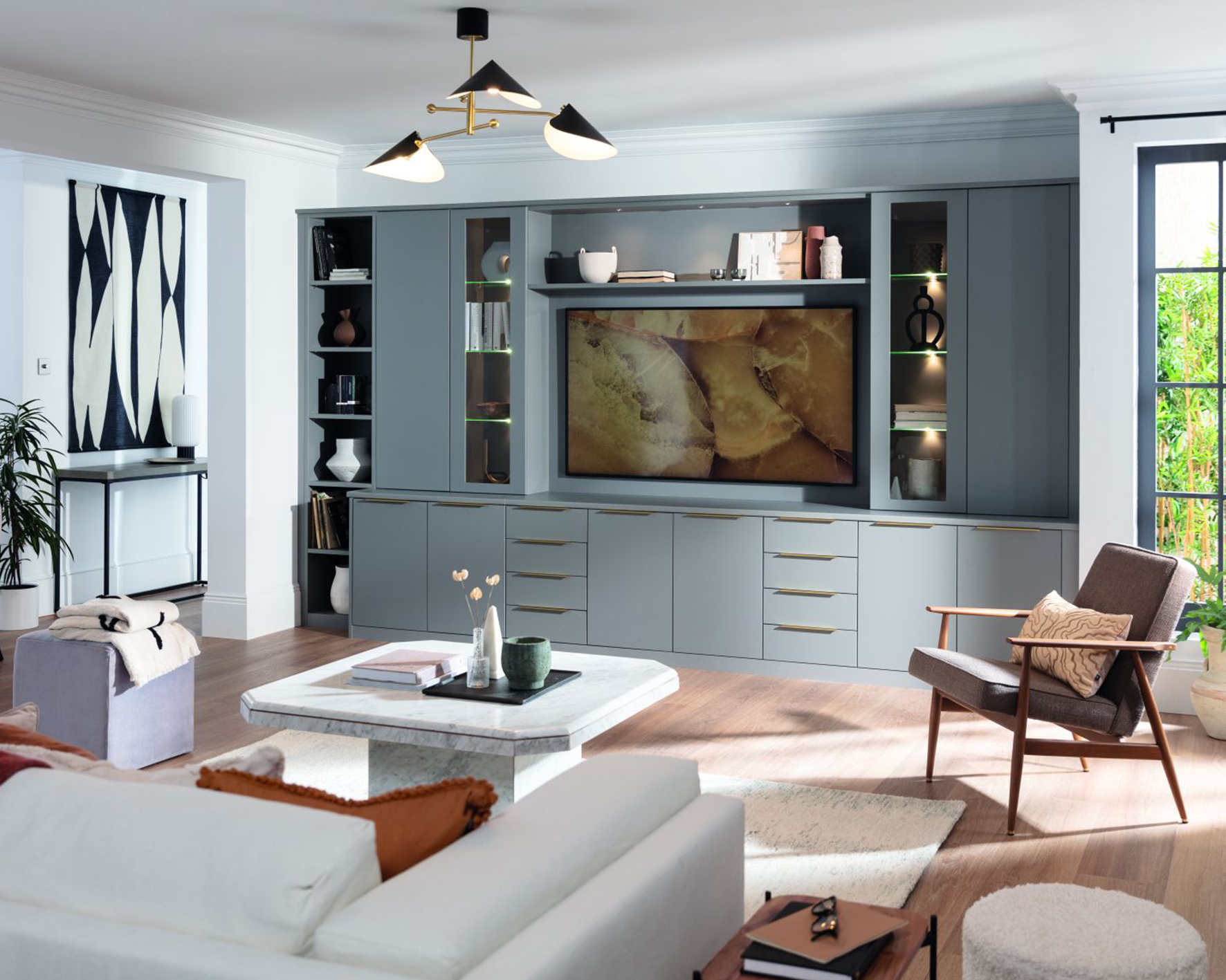
Media wall shelves will need to be well ventilated to protect all your gadgets from overheating. ‘We use a bespoke furniture maker on our projects if possible, as this gives you maximum flexibility with the overall look of the furniture and materials,’ says Luke Crutcher from Living Home Tech.
'It also means we can liaise with the joiner to make sure correct ventilation is included. Airflow is required around your gadgets as the heat generated needs to be able to escape. Any build-up of heat will cause equipment to fail over time.’
7. Have access for fixing, wiring and updates
As well as being able to easily access your equipment - so engineers can fix cables or update your system - you should also think about leaving space for new gadgets that you buy in future when considering how to mount a TV on the wall.
‘Being able to get to the back of your components is pretty handy when you need to pull the power lead out to reboot your Sky Q box,’ says Alex Josling. ‘Remember to put in plenty of Cat5 / Cat6 for a hard-wired network connection to all your devices. They may have WiFi built in, but everything will work better if it's hard wired to your network.
‘If you want to be really clever, put in a PDU so that you can easily power cycle your hardware without having to reach around for a power lead to pull out when your Sonos needs a reboot.’
What's the best way to display my TV in a media wall?
Audio and visual engineer Owen Maddock from Cinemaworks recommends using a pull-out TV bracket and positioning your TV so it can be viewed at eye level when sitting down.
'A pull-out bracket is an absolute must for long-term serviceability, and ensures access for new cabling,' he says. 'The HDMI spec changes with time, so never fix the cables down firmly in case you have to update or replace a broken one.'
Be The First To Know
The Livingetc newsletters are your inside source for what’s shaping interiors now - and what’s next. Discover trend forecasts, smart style ideas, and curated shopping inspiration that brings design to life. Subscribe today and stay ahead of the curve.
One of the UK's most respected tech and smart homes writers, Emily Peck also covers everything from interiors style to decorating trends. She is a contributor to Wired UK, and has also had a column in House Beautiful. She has written for publications such as Grand Designs, Stylist, Shortlist, Woman&Home, BBC, Ideal Home and House & Garden. She was once the Features Editor of Ideal Home.
-
 Burl Wood Decor Is 2025’s Most Coveted Comeback — Here’s How to Get the Storied Swirls for Less
Burl Wood Decor Is 2025’s Most Coveted Comeback — Here’s How to Get the Storied Swirls for LessIrregularity is the ultimate luxury, but you don’t need an antiques dealer to find it
By Julia Demer Published
-
 5 Garden Features That Instantly Add Value to Your Home — While Making Your Outdoor Space More Practical, too
5 Garden Features That Instantly Add Value to Your Home — While Making Your Outdoor Space More Practical, tooGet to know all the expert tips and tricks for making your backyard a standout selling point for your home.
By Maya Glantz Published